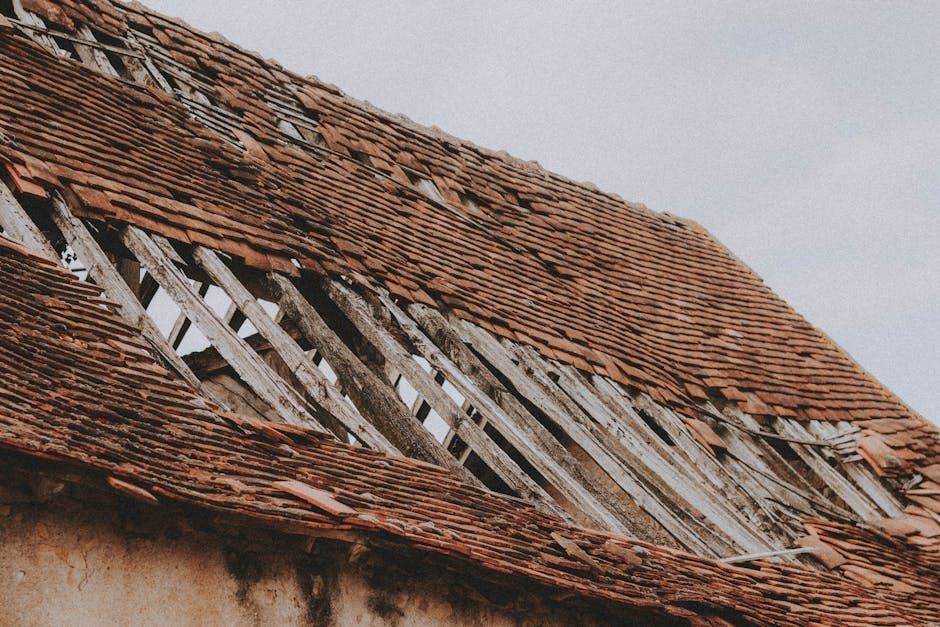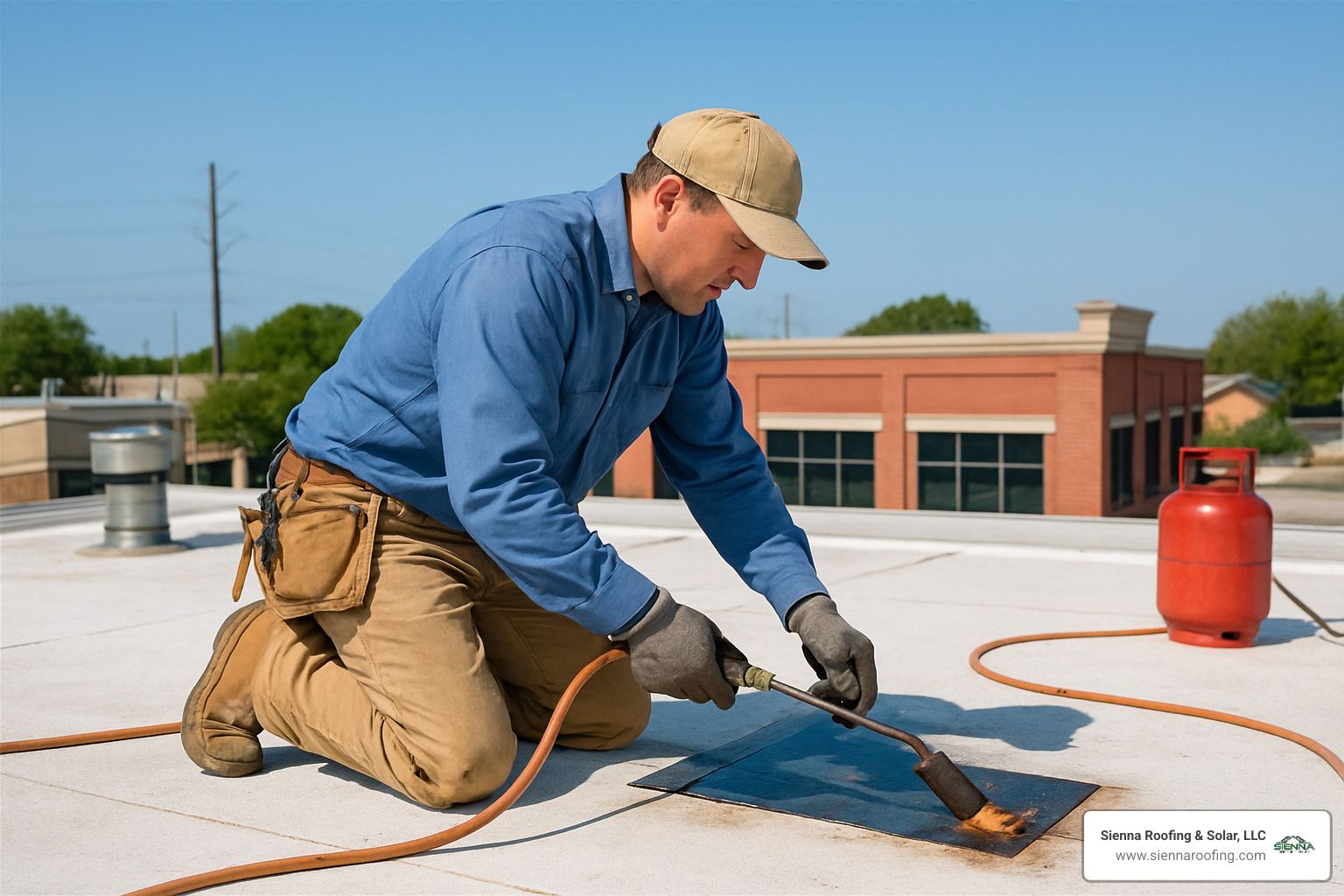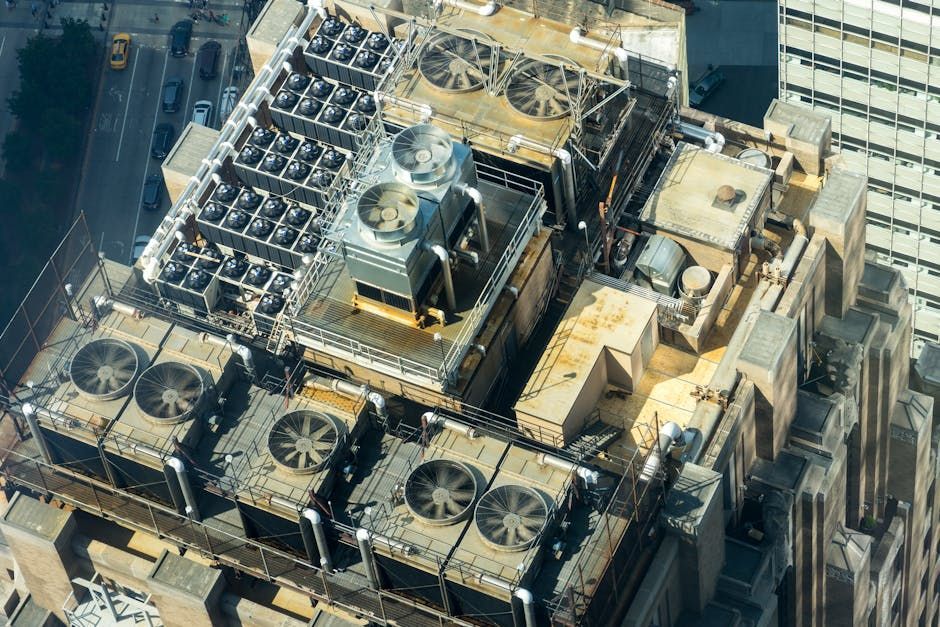Don't Get Smoked Out by Prices—Average Cost of Chimney Flashing Repair Revealed

Andre Castro
Owner of Sienna Roofing
The Real Cost of Keeping Your Chimney Leak-Free
The average cost of chimney flashing repair typically ranges from $300 to $700 for standard repairs in 2024-2025. Here's a quick breakdown:
| Repair Type | National Average Cost |
|---|---|
| Minor spot repairs | $150-$300 |
| Standard flashing repairs | $300-$700 |
| Complete replacement | $800-$1,500+ |
| Labor (hourly rate) | $75/hour average |
Leaking chimneys rank among homeowners' biggest headaches, and with good reason. That troublesome junction where your chimney meets the roof is vulnerable to water intrusion, which can quickly turn a small problem into thousands of dollars in damage. When water starts making its way into your attic, walls, or ceiling, the culprit is often failing chimney flashing.
The cost of chimney flashing repair depends on several key factors: the extent of damage, materials used (aluminum, copper, or galvanized steel), roof accessibility, and your geographic location. In Houston and surrounding areas like Sugar Land, our humid climate and storm patterns create unique challenges for maintaining watertight roof-chimney junctions.
I'm Andre Castro, founder of Sienna Roofing & Solar, and throughout my career in the roofing industry, I've helped countless homeowners steer the average cost of chimney flashing repair while ensuring quality workmanship that stands up to Texas weather.
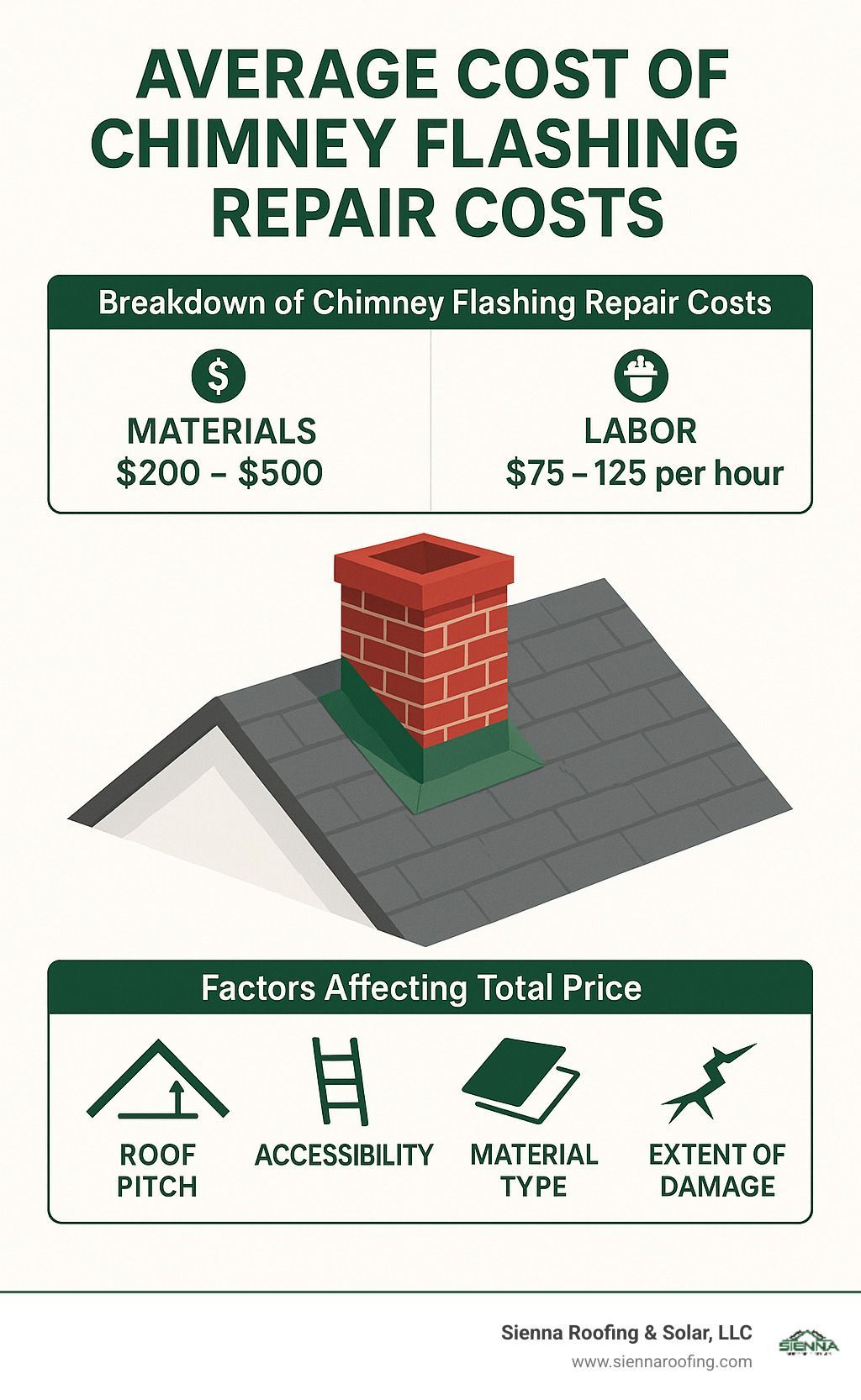
What Is Chimney Flashing and Why It Matters
Ever wondered what keeps water from pouring into your home where your chimney meets the roof? That's the job of your chimney flashing – and it's more important than you might think.
Chimney flashing isn't just a single piece of metal but rather a carefully designed system that creates a watertight seal at one of your roof's most vulnerable points. Think of it as your home's first line of defense against Texas downpours.
This protective system works with several components that function together like a well-rehearsed band:
Base flashing forms the foundation, tucking neatly under your shingles while extending up the chimney wall. Step flashing consists of L-shaped pieces layered with each course of shingles, creating a stepped effect that directs water away. Finally, counter flashing is embedded into your chimney's mortar joints and overlaps the step flashing, completing the watertight barrier.
"When I explain flashing to homeowners in Sugar Land, I often compare it to the weather-stripping around your doors and windows," says Andre Castro, founder of Sienna Roofing & Solar. "It might seem small, but it's doing an enormous job protecting everything you value inside your home."
When chimney flashing fails, the consequences go far beyond a simple drip. Water is surprisingly destructive – it can rot structural wood in your roof framing, foster mold growth in your attic, stain your ceilings, and even compromise your home's insulation, leading to higher energy bills.
According to scientific research on water damage and home repair, even small leaks can cause significant structural damage over time if left unaddressed. The damage often spreads far beyond the initial entry point, making early detection crucial.
Here in the Houston area, our unique climate puts extra stress on chimney flashing. Our combination of heavy rainfall, high humidity, and occasional severe weather can accelerate deterioration of flashing materials. That's why we recommend regular inspections as part of your roof maintenance routine.
The average cost of chimney flashing repair is significantly less than fixing the extensive damage that can result from neglected flashing – making preventative maintenance one of the smartest investments you can make in protecting your home's integrity and value.
Spotting Trouble Early: Signs & Risks of Neglect

Your chimney might not be sending smoke signals about its problems, but it definitely leaves clues when flashing starts to fail. As we've seen countless times across Sugar Land and Houston neighborhoods, these warning signs often appear long before that dreaded ceiling stain makes its dramatic entrance.
Water stains on ceilings or walls near your chimney are perhaps the most obvious red flag – by this point, moisture has already found its way into your home. Before things reach this stage, look for rust stains trickling down your exterior chimney bricks, a telltale sign that metal flashing is deteriorating and releasing oxidized material.
When inspecting your roof, pay special attention to any loose or missing sections of metal flashing. Even small gaps can invite big problems. Similarly, peeling caulk or visible openings around the chimney base essentially roll out the welcome mat for rainwater.
Don't ignore your nose! Mold or musty odors in the attic near the chimney often signal ongoing moisture issues before visible damage appears. Your chimney itself might show signs of distress through damp mortar joints or spalling bricks where surfaces begin flaking away. When shingles start pulling away near the chimney base, they're practically shouting for attention.
"I thought it was just a small leak" – these words begin too many expensive repair stories we've encountered throughout Houston. What begins as a simple $300 flashing repair can quickly spiral into thousands in damage costs. Water is surprisingly patient and persistent, slowly compromising your home's structural integrity.
The average cost of chimney flashing repair might seem significant today, but it pales compared to the cascading problems that develop when water infiltration continues unchecked. We've seen modest flashing issues transform into complete attic overhauls when rotting roof decking and framing require replacement. Wet insulation not only loses its thermal properties but creates the perfect environment for mold colonies that can affect your family's health.
Here in Houston's unique climate, we face particular challenges. Our intense summer storms can drive water forcefully against chimney joints, while our occasional freeze-thaw cycles are particularly damaging to masonry. Water that seeps into tiny cracks expands when frozen, gradually widening those openings and accelerating damage to both your flashing and chimney structure.
From our experience serving homeowners throughout the area, delayed chimney flashing repairs typically lead to bills 5-10 times higher than addressing the issue promptly. Beyond the financial impact, there's the disruption to your daily life and the potential hit to your property value when it comes time to sell.
If you notice any of these warning signs, taking immediate action isn't just prudent—it's essential for protecting your home investment. Catching problems early can mean the difference between a straightforward repair and a major renovation project. For more information about how water damage affects homes, check out this research on water damage and home repair, or learn about damaged bricks and their repair.
Average Cost of Chimney Flashing Repair in 2024-2025
When homeowners ask me about the average cost of chimney flashing repair, I usually tell them to expect between $300 and $700 for standard repairs in 2024-2025. But as with most home repairs, your actual cost depends on several key factors.
Think of chimney flashing repair like car maintenance – the final bill varies widely based on what you're driving and what needs fixing. For your chimney, these factors include how bad the damage is, what materials we'll use, and even where your home is located.
Let's break down what influences these costs in real terms:
Minor spot repairs might only set you back $150-$300 – perfect if you've caught the problem early. But if you need a complete replacement, you're looking at $800-$1,500 or more, especially for larger or more complex chimneys.
Labor typically makes up the biggest chunk of your bill, with professional roofers charging around $75 per hour on average. And if your roof is particularly steep or your home is multi-story, expect that labor cost to jump by 25-50%. I always tell my Houston-area customers: the harder it is to reach your chimney safely, the more it's going to cost.
Average cost of chimney flashing repair at a glance
For quick reference, here's what most homeowners pay for chimney flashing work:
- Spot repairs/recaulking: $150-$300
- Partial flashing replacement: $300-$500
- Complete flashing system replacement: $800-$1,500+
- Emergency repair service: Add $100-$300 for after-hours or urgent service
- Warranty upgrades: Extended workmanship warranties may add $100-$200
Here in Sugar Land and the greater Houston area, we typically see costs landing in the middle of these ranges. That said, if you've got a particularly challenging roof or want premium materials, your quote might land on the higher end.
Breakdown of the average cost of chimney flashing repair by material
The material you choose makes a huge difference in both price and longevity. I often tell homeowners to think of this as a "good, better, best" scenario:
| Material | Cost per Linear Foot | Lifespan | Best For |
|---|---|---|---|
| Aluminum | $5-$9 | 15-20 years | Budget-conscious homeowners |
| Galvanized Steel | $6-$10 | 15-25 years | General durability |
| Copper | $15-$25 | 25-50+ years | Longevity and aesthetics |
| Lead | $10-$20 | 40-50+ years | Traditional masonry chimneys |
Aluminum is your budget-friendly option – lightweight and doesn't rust, but it won't last as long as other materials. Galvanized steel offers a good middle ground, though our humid Houston climate can eventually cause rusting.
Copper is my personal recommendation for most Houston homes. Yes, it costs more upfront ($15-$25 per linear foot), but it develops a gorgeous patina over time and can last 50+ years. When you spread that cost over decades of protection, it's actually quite economical.
Lead flashing is extremely durable and has been used traditionally for centuries, but it's less common today due to environmental considerations.
Regional & Seasonal Price Swings
Where you live plays a big role in what you'll pay. Here in the Gulf Coast area, we typically see mid-range prices compared to the national average. But timing matters too – try to avoid hurricane season (June-November) when demand spikes and prices can jump 15-25%.
By comparison, homeowners in Central Massachusetts typically pay $400-$900 for the same repairs due to harsher winters and older homes with more complex rooflines. Midwest homeowners often enjoy lower rates ($250-$600) thanks to generally lower labor costs.
I always recommend scheduling chimney work during our drier months here in Houston (February-May). You'll likely get better availability, potentially lower pricing, and avoid the rush that comes after storm season.
One more thing to keep in mind: material costs have increased about 10-20% since 2021 due to supply chain issues and inflation. This is affecting repair prices nationwide, not just in Texas.
Repair vs Replacement: Which Makes Sense for Your Chimney?
When I'm up on a roof inspecting chimney flashing, the most common question homeowners ask is: "Can we just repair it, or do we need to replace everything?"
Here's my honest advice after years in the business:
If your flashing is approaching 15-30 years old (depending on the material), replacement usually makes more sense than repair. The same applies if more than 30% of your flashing shows deterioration – patches might work temporarily, but you'll likely be calling us back within a year or two.
For metal chimneys, reflashing costs are typically lower ($300-$500) compared to masonry chimneys ($500-$1,500) due to the simpler installation process.
Timing matters too. If you're planning a full roof replacement in the next couple of years, a temporary repair might make sense. But if you're staying put long-term, the peace of mind from a complete replacement with a full warranty is worth the additional cost.
For most Houston-area homes we service, complete replacement makes sense when:
- Your flashing is more than 20 years old
- You've had multiple leak points develop
- Your chimney has undergone masonry repairs
- You plan to stay in your home for at least 5 more years
Yes, there's a significant difference between repair ($300-$500) and replacement ($800-$1,500), but consider this: properly installed flashing with quality materials is one of the best investments you can make to protect your home from water damage for decades to come.
Budget Hacks: DIY, Insurance & Cost Reduction Tips
Looking to trim down the average cost of chimney flashing repair without cutting corners on quality? While professional repairs typically run $300-$700, I've gathered some practical ways to manage these expenses without compromising your home's protection.
DIY Options and Considerations
The DIY route tempts many homeowners with potential savings—DIY recaulking might cost just $20-$50 in materials, patch kits run $50-$150, and even a complete DIY replacement only requires $200-$400 in materials. That's significant savings on paper!
But before you climb that ladder, let me share what we've learned from helping hundreds of Houston area homeowners: roof work comes with serious considerations.
First and foremost is safety—I've seen too many homeowners in Sugar Land and surrounding communities end up with injuries from roof falls. The savings quickly disappear when medical bills enter the picture. Then there's the technical aspect—proper flashing installation requires specific techniques to create truly watertight seals that stand up to our Gulf Coast weather.
If you're determined to tackle minor repairs yourself, invest in professional-grade sealants like FlashSeal rather than standard caulk. Just remember these should be viewed as temporary fixes, not permanent solutions. And always check if DIY work might void existing roof warranties!
Insurance Considerations
Your homeowners insurance might cover chimney flashing repairs in certain situations. When storm damage from high winds or hail damages your flashing, insurance typically covers it. The same goes for fire-related damage or certain types of accidental damage.
However—and this is important—insurance won't typically cover normal wear and tear, maintenance issues you've neglected, pre-existing damage, or problems stemming from improper installation.
Before filing a claim, do a quick calculation: Is your repair cost significantly higher than your deductible? Small claims can potentially impact your future premiums, so sometimes paying out-of-pocket makes more financial sense in the long run.
Cost-Saving Strategies
Even when hiring professionals like our team at Sienna Roofing & Solar, you can still be strategic about managing costs:
Bundle your repairs whenever possible—combining chimney work with other roofing repairs can knock 10-20% off the total price. In the Houston area, scheduling during our winter months (December-February) often means better availability and potentially better pricing.
Getting multiple quotes is always wise, but be wary of estimates that seem too good to be true—they usually are! While copper flashing offers the best longevity, high-quality aluminum or galvanized steel can provide good performance at a lower cost if budget is your primary concern.
Perhaps the most important cost-saving strategy is addressing issues early. Annual inspections ($80-$200) can catch small problems before they require extensive repairs. Think of it as preventative medicine for your home!
We've also helped many homeowners by using remnant materials from larger jobs for small repairs—don't be afraid to ask your contractor about this possibility.
At Sienna Roofing & Solar, we believe in transparent pricing and helping you make informed decisions. That's why we offer free inspections to help identify the most cost-effective approach for your specific situation. After all, every home is different, and cookie-cutter solutions rarely make sense when it comes to protecting your biggest investment.
More info about Roofing Repair
Choosing a Certified Pro & Maintenance Schedule
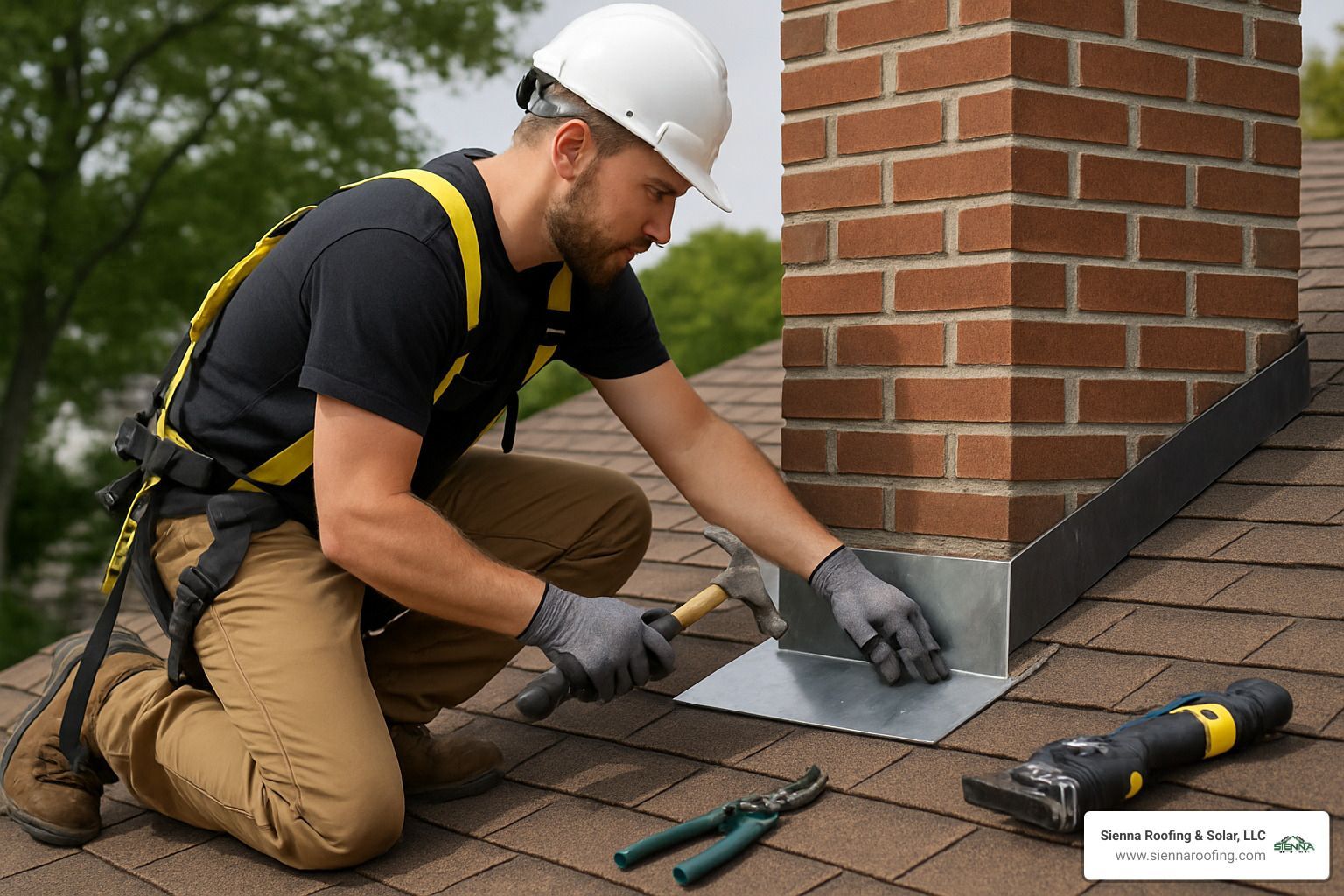
When it comes to protecting your home from water damage, the person you hire matters just as much as the materials they use. I've seen too many homeowners learn this lesson the hard way after hiring the lowest bidder.
Credentials to Verify
Finding a trustworthy professional for your chimney flashing work doesn't have to be complicated. Here in Texas, start by confirming your contractor has proper roofing credentials – it's your first line of defense against fly-by-night operators. Always verify they carry both liability insurance and workers' compensation. Without these, you could be on the hook if someone gets injured on your property.
Look for specialists with CSIA (Chimney Safety Institute of America) or NFI (National Fireplace Institute) certifications. These credentials show they've received specialized training in chimney systems, not just general roofing knowledge.
When we meet with homeowners in Sugar Land and throughout Houston, we always encourage them to check reviews specific to chimney and flashing work. A company might be great at installing shingles but have limited experience with the precision needed for proper flashing installation.
Finally, never proceed without a detailed written estimate. At Sienna Roofing, we break down every quote to show exactly what you're paying for – materials, labor, and warranty coverage – with no surprises later.
What Quality Installation Includes
A proper chimney flashing job is much more than slapping some metal and caulk around your chimney. Quality work begins with completely removing the existing flashing and carefully inspecting the underlying materials for hidden damage.
Your technician should thoroughly clean and prepare the chimney-roof joint before installing new base flashing that tucks properly under your shingles. Each piece of step flashing should be carefully integrated with your roof's shingle courses – this isn't a one-piece-fits-all situation!
The mark of a true professional is how they handle the counter flashing. It should be properly embedded into your chimney's mortar joints, not simply surface-mounted and caulked. For wider chimneys (over 30 inches), a cricket installation is essential to divert water properly.
Before considering the job complete, reputable companies perform a water test to verify everything is sealed correctly. This simple step can prevent thousands in future damage.
Maintenance Schedule for Long-Term Protection
Even the best chimney flashing won't last forever without some TLC. Our Houston climate is particularly demanding on roofing systems, with intense sun, heavy rainfall, and the occasional severe storm all taking their toll.
I recommend performing visual inspections of your chimney flashing annually – look for loose metal, failing sealant, or rust stains on your brickwork. These early warning signs can save you significant money if caught promptly. Every 1-2 years, invest in a professional inspection by a CSIA-certified inspector who knows exactly what to look for.
The average cost of chimney flashing repair stays manageable when you maintain your system properly. Plan to reseal joints every 3-5 years, which is especially important in our Gulf Coast climate where UV exposure accelerates sealant deterioration. Regular gutter cleaning prevents water backup that can test even the best flashing systems.
With proper installation and maintenance, quality chimney flashing materials offer impressive lifespans: aluminum typically lasts 15-20 years, galvanized steel 15-25 years, copper an impressive 25-50+ years, and lead 40-50+ years or more.
At Sienna Roofing & Solar, our technicians understand the unique challenges Houston-area homes face. We've developed installation techniques specifically designed for our Gulf Coast weather patterns, giving homeowners the confidence that their chimney flashing will stand up to whatever Mother Nature throws at it. For a professional assessment of your chimney flashing condition, check out our Roof Inspection services.
Frequently Asked Questions about Chimney Flashing Costs
Does homeowners insurance cover chimney flashing repair?
When that drip in your ceiling appears after a storm, your first thought might be, "Will insurance help with this?" The answer isn't always straightforward.
Homeowners insurance typically covers chimney flashing repair when the damage comes from sudden, unexpected events. If a fierce Houston thunderstorm sends a branch crashing onto your roof or high winds tear away flashing, you're likely covered. Similarly, damage from hail or fire falls under most policies' protection.
However, your insurance company will probably decline your claim if the damage stems from:
- Normal aging and deterioration
- Maintenance you've been putting off
- Problems that existed before you bought your policy
- Flashing that wasn't installed correctly in the first place
If you suspect storm damage, grab your phone and take plenty of photos before anything gets repaired. Contact your insurance company promptly, but remember your deductible applies to these claims. For minor repairs under $1,000, it might not make financial sense to file a claim if your deductible is $500 or higher.
How often should chimney flashing be inspected or maintained?
Think of your chimney flashing like your car's oil change – regular check-ups prevent costly breakdowns.
For homes in Sugar Land and throughout the Houston area, we recommend this maintenance schedule:
Visual inspections twice yearly – once in spring and again in fall. Take a pair of binoculars and look for rust spots, loose metal pieces, or damaged sealant from the safety of the ground.
Professional inspections annually by someone who knows what they're looking at. At Sienna Roofing, we include chimney flashing in our comprehensive roof inspections.
Post-storm checks are crucial after Houston's notorious weather events. Hurricane-force winds and driving rain can compromise even well-installed flashing.
Sealant reapplication every 3-5 years keeps those critical joints watertight. Think of it as refreshing your home's raincoat.
Living in the Houston area means your flashing faces unique challenges – blistering summer heat, sudden downpours, and occasional tropical systems. We strongly recommend checking your chimney flashing after hurricane season ends and addressing any issues before winter rains arrive.
What happens if I delay flashing repairs for a season?
"I'll get to it next month" can become an expensive promise to break when it comes to chimney flashing.
A small leak rarely stays small. Water is remarkably persistent at finding its way deeper into your home's structure. What starts as a minor repair can quickly snowball into a major renovation project.
We've seen it countless times with our Sugar Land customers – a $450 flashing repair that could have fixed everything ballooned into a $3,800 nightmare after just one rainy season. Why? Because water had penetrated the attic, soaked insulation, stained ceilings, and created perfect conditions for mold growth.
The typical cost escalation for delayed repairs is 2-5 times the original estimate. That's not a small premium to pay for procrastination!
In Houston's warm, humid climate, mold can begin growing in damp areas in just 24-48 hours. Once established, removing it adds significantly to your repair costs and can create health concerns for your family.
Beyond the immediate damage, water issues must be disclosed when selling your home, potentially reducing your property value or complicating a future sale.
The bottom line? That small chimney flashing problem you're noticing today won't fix itself, and it certainly won't get cheaper to repair with time. Taking care of it promptly is always the wisest financial decision.
Conclusion
When you compare the average cost of chimney flashing repair ($300-$700) to the potential damage bill from a leaking chimney, the math becomes pretty clear. Those water stains on your ceiling aren't just cosmetic issues – they're warning signs that could eventually lead to structural damage costing thousands. Even a complete flashing replacement ($800-$1,500+) is significantly more affordable than dealing with extensive water damage repairs ($2,000-$10,000+).
Your home is likely your biggest investment, and protecting it shouldn't be an afterthought. Here in Houston, our weather doesn't cut us any breaks – from scorching summers to hurricane-force downpours, your chimney flashing works overtime to keep water where it belongs: outside your home.
I've seen too many Sugar Land homeowners delay small repairs until they became major headaches.
One customer recently told me, "I wish I'd called you six months ago when I first noticed that water stain." By the time we arrived, what would have been a simple $400 repair had ballooned into a $3,200 project involving ceiling repairs and mold remediation.
At Sienna Roofing & Solar, we believe in straight talk and fair pricing. We won't upsell you on unnecessary work, but we will give you honest advice about what your home needs to stay protected against our unique Gulf Coast climate. Our team lives and works in this community – we understand the specific challenges Houston-area homes face because we face them too.
The peace of mind that comes with properly installed and maintained chimney flashing is worth every penny. And with our 100% satisfaction guarantee, you can feel confident your home is protected for years to come. We stand behind our work because that's what neighbors do for each other.
Don't wait until that small leak becomes Sunday's emergency repair. Protecting your home equity starts with addressing small issues before they grow. Contact us today for a free inspection and honest assessment of your chimney flashing – your home (and your wallet) will thank you.



